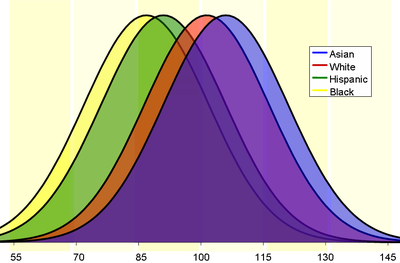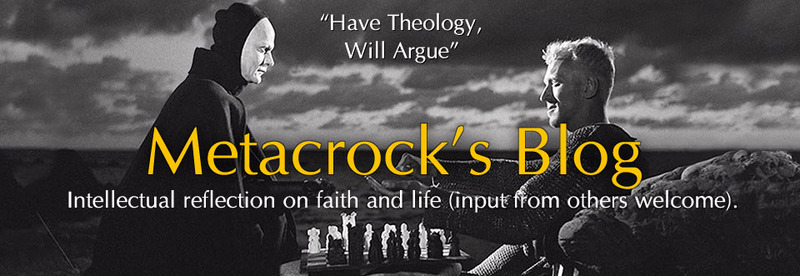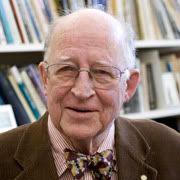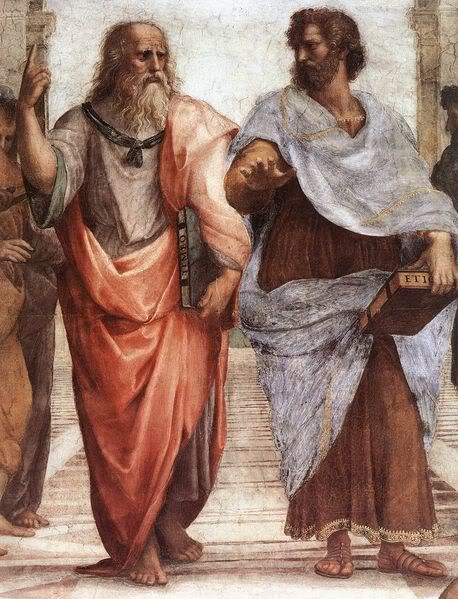
A new major study on IQ and religious belief has been released, it's already caught the buzz in atheist circles. It's got a sophisticated and scientific approach to statistical methods, although that doesn't mean it is free of biases. The study, done by Miron Zuckerman and Jordon Silberman of the University of Rochester NY and Judith A. Hall, Northeaster University, Boston. The Study is major since it combined a statistical meta-analysis of a larger number of studies, the largest ever done before; its findings are overwhelmingly in favor of atheism. They used 63 studies showing a significant negative association between intelligence and religiosity."[1] (the study has been removed from the scribd source linked to)
The study for all its statistical sophistication, is beset by some basic flaws that are more or less part of the package of buying into the atheist dogma about intelligence.
Before really getting into I want to point out what atheist will do with this on the popular level. We already see it on U.S. Message board where they are saying the study finds "Religious people are less intelligent than atheists." The study never says that. It says there's a stronger correlation between higher IQ and unbelief than between higher IQ and belief. It doesn't say why, correlation is not cause. Let's let assert that this "says" what they want it to say.
The 63 studies used range from 1928 to 2012. "The authors look at each study’s sample size, quality of data collection, and analysis methods and then account for biases that may have inadvertently crept into the work. This data is next refracted through the prism of statistical theory to draw an overarching conclusion of what scholars in this field find." [2] The major findings are sumarized by Rathi, "Out of 63 studies, 53 showed a negative correlation between intelligence and religiosity, while 10 showed a positive one. Significant negative correlations were seen in 35 studies, whereas only two studies showed significant positive correlations." As the abstract of the study puts it, "The association was stronger for college students and the general population than for participants younger than college age; it was also stronger for religious beliefs than religious behavior."[4] "Stronger for beliefs than behavior," In other words the relationship between being smart and being unbelieving holds more in terms of the beliefs themselves than for just going to chruch. I would also make that assumption. People might feel expected to go to church without believing the ideas.

Miron Zuckerman
Before analyzing the findings there are problems with the assumptions that must be understood. The study defines intelligence as "ability to reason, plan, solve problems, think abstractly,comprehend complex ideas, learn quickly and learn from experience.”[5] There are other forms of intelligence but we can bracket that for the moment. No real problem there. There is a problem with the way they use religiosity:
Religiosity can be defined as the degree of involvement in some or all facets of religion. According to Atran and Norenzayan (2004), such facets include beliefs in supernatural agents, costly commitment to these agents (e.g., offeringof property), using beliefs in those agents to lower existential anxieties such as anxiety over death, and communal rituals that validate and affirm religious beliefs. Of course, some individuals may express commitment or participate in communal rituals for reasons other than religious beliefs. This issue was put into sharp relief by Allport and Ross (1967),who drew a distinction between intrinsic and extrinsic religious orientations. Intrinsic orientation is the practice of religion for its own sake; extrinsic religion is the use of religion as a means to secular ends. This distinction will be referred to in later section.[6]We start to see some problems of bias here. The concept of "belief in supernatural agent." This would no doubt be the hi-jack version of supernatural, not mystical experience, which is the original meaning of the term.[7] Not only would they ignore the mystic but also, depending upon how closly they define "using beliefs in those agents to lower existential anxieties such as anxiety over death, and communal rituals that validate and affirm religious beliefs," they might be defining religion too conservatively.That becomes important becasue it might lead to leaving out liberal theological types form the mix of "religious." If liberal theology tends to draw more intelligent people then one would be leaving the more intelligent religious people out of the count. In other words they are biasing their take on religiosity to include only the more conservative and fundamentalist types. Supposedly the findings determined that differences in education didn't matter for the correlation,[8] but that would be distorted by the leaving out of the liberals, who might tend to have a better theological education. It might also be that literalism implies less intelligence so by letting out liberals they might be letting out the more intelligent religious thinkers.
Another indication of the way biases might play a role is found in the opening paragraphs of the study itself in recounting the history of the study of the topic. In their brief history they show that findings seem to be correlated with the times. From the Early period in the 1920's to the 1960s the findings tended to be pro-correlation, intelligent people tend not to be religious. That coincides with a lot of things in that era, including the rise of reductionism, positivism, the secularization. In the 60s-90s the finding went the other way and tended to draw more intelligent people to knowledge of and belief in religious ideas. [9] Findings show mystical experience increased a great deal in the 60s and due to both growing interest in eastern religion and mediation and "Jesus movement," religious interest increased.[10] During the remainder of the century the tendency seemed to be toward findings that affirmed there is no valid correlation between intelligence and religious beilef or lack there of. [11] Since the advents of this century the major studies have been pro-correlation again, correlating lack of religious belief with higher intelligence. That move is associated with the rise in popularity of atheism the decline in popularity of organized religion and the rise in scientism and reductionism. This history really tells the whole story, it illustrates not only the basis as they show up in the masses, urged on by trends in society, but also the biases of the researchers.
The studies done since Francis (late 90s) are not only badly done but they are also biased toward atheism. Some of these facts in no one of them biasing the Zuckerman study in a major way. Yet there are some red flags. To undrstand this we have to look at one of the major researchers of this century: Nyborg, Hamalton, Lynn, and Kanazawa. These have attracted attention for their biases. [12] We will focus on Kanazawa because he's going to have a special relationship to the Zuckerman study. Kanazawa assumes the Savanna-IQ Interaction Hypothesis which basically implies that atheism is an evolutionary advance. That assumes there's a gene for atheism and and it's a beneficial mutation. That is not only an extreme idea but one we would be hard pressed to find much support for in the ranks of modern science (ironic that the head of the genome project was a Christian). [13] Kanazawa has been roundly attacked for making racist assumptions, for example by PDF by Belayneh Abate who changes biased data collection.
Data Collection Problem: Kanazawa admits borrowing secondary data from different places. He borrowed the IQ data from Lynn (Northern Ireland) and Vanhanen (Finland) Table-1. According to him, IQ was directly measured onlyKanazawa was fired from Psychology Today for these views (and racist implications that brought charges of racism). He was also disciplined by London School of Economics for these implications. In the oct 22, 2012 post of this blog I wrote:
in eleven Sub-Saharan African Countries and the rest was predicted using prediction methods Kawakawa tried to show that the IQ measurement was valid by analyzing the directly and indirectly measured data separately. It is true that no method of measurement is perfectly accurate or precise. However, one has to ask how the samples were drawn, and how the results of the sample IQ’s were translated in to national average. Whether IQ measures general intelligence
or not is another story. For the moment, let’s assume it does. Most IQ tests include both verbal and written tests. How valid will be the IQ test in Sub-Saharan countries where almost all sense organs of the people are turned dysfunctional
by dictator rulers who are supported by major powers of the world? In addition to that, IQ measurement is not entirely objective. Our daily life proves how people are prejudiced towards one another irrespective of educational status.
Therefore, to what extent should we believe the validity of the IQ measurements of Lynn and Vanhanen? What about the possibility of differential misclassification errors in the IQ measurement?[14]
Kanazawa is a reader in management at the London School of Economics, he has set him about the task of doing battle with what he calls "political correctness." He bases his theoretical orientation in evolutionary psychology. Meaning, behind his assumptions lurk the dragon of sociolo biology, so we should suspect a link to the "Bell Curve" sort of thinking. LSE has forbade him to publish in non peer reviewed sources for a year as a result of the controversy surrounding his work.(BBC News London, 16 September 2011 Last updated at 06:41 ET "LSE Lecturer Dr. Satoshi Kanazowa Tells of Race Blog Regret"). He was fired from Psychology Today for the Blog (which I criticized on Atheistwatch) "psychology today," it was Savanna principle primarily that got him the sack (Colorofchagne.org, changing the color of Democracy June 1, 211).
Unfortuntely Kanazawa plays are more important role than just having his data included as one of 63 studies. He actually performed some of the statitical analysis that went into the study. A note under "acknowledgements" states:
Acknowledgments
We thank the investigators who provided additional information about their studies at our request. We are particularly grateful to... Satoshi Kanazawafor performing a number of statistical analyses on his data, andinvariably sending us the results on the same day he received our query.
notes
1. Kanazawa conducted these analyses in response to our request(S. Kanazawa, personal communication, April 2012).2. The formula for correcting
r
for range restriction is (Sackett &Yang, 2000):
-4 scale); standard deviation
I have not reproduced the data in the example as it doesn't copy accurately. But it is listed on page 23 of the study and one can read the formula. This is one example of what they call "a number of statistical analyses." Not only does this raise a red flag in terms of their findings, but raises questions of bias and the author's own identification with the ideological commitments of Kanazawa. While we must be careful to avoid guilt by association, one can't help but wonder why they would allow him to be the one to contribute that analysis? While that is not proof off any kind of wrong doing, it must raise a caution.
Over all the argument is that the data from before the "humanistic era" of counter culture (60s-70s) and after that era are both suspect. Of course that's a two edged sword. They might argue that the data from the 60s is biased the other way. It would seem the study methodology is better in that era since Kanazawa didn't get his data originally but used that provided by Nyborg et al. Nyborg's data is suspect (see FN 12 below). Nyborg's data is also criticized most seriously by William T. Dickens and James R. Flynn (Brookings institution). [15] Nyborg quotes Lynn and Lynn uses Hamilton and both use Knazawa and he uses them. It's a citation circle and it's all based upon genetic superiority (echoed in the Psychology today blog with Barber and Kanazawa) and it links genetic superiority to atheism. It's clearly the outlines of a massive ideology based upon some unsavory ideas that represents the basis of IQ/Religion research in the first decade of the century and the Zuckerman study is plugged right into it. It may not mean that Zuckerman is biased and I'm certainly not trying to tar him with the same brush in racist terms, but it has to effect his data not only he uses the studies but the guy who did one of them contributed to his statical analysis.
There we have to ask do they have a way to really fail safe themselves against the possibility of dogmatic bias? They think they do becuase they say the have statistical means of overcoming bias. But can they really do that when the problem is at such a fundamental level as their very definition of religion? Many of the studies going into their analysis are seen as bad. Can they make up for that?
The most recent period of studies (this century) appear to have their biases. Above I alluded to the possibility of bias in the early period (1920's-60s). Now it's time to find examples that might indicate the probability of this bias. Zuckerman and his colleagues quote the first Argyle study (1958), For example, the first Argyle study found that "intelligent students are much less likely to accept Orthodox beliefs and rather less likely to have pro-religious attitudes."[16] That could just as easily mean that "Orthodox includes conservative religious ideas but not theologically liberal ones." Does "rather less likely to have pre religious attitudes" equal being atheists? One could self identify as a member of a religious tradition and have some attitudes that are classified as "not pro religious." I have atheists habitually asserting that liberal theological views are not pro religious. One site on the net where an atheist has argued the IQ issue for a long time, and he makes that assumption. The Inconclusive nature of Argyles findings is born out by the fact that his second study (with Beit-Hallahmi--1997) draws no conclusion in the matter of the corrolation between intelligence and religous belief, saying "there is no great difference in intelligence between religious and non religious." [17]
How do Zucekrman et al classify that? Do they count the first study as "pro-negative" (correlation between intelligence and religion) and the second as no correlation? What of the implications of the first study in relation to a more liberal understanding of religion? Moreover the Thomas Simington Study (1935) finds that: "There is a constant positive relation in all the groups between liberal religious thinking and mental ability There is also a constant positive relation between liberal scores and intelligence." Thus establishing the link that liberal theological types are high IQ scorers. Oddly enough Zuckeman leaves out this study. Not listed on his bibliography.[18] Thus there is good reason to suspect that they are only using studies that measure the conservative end of belief thus are leaving out the IQ ranges of the more liberal theology inclined. They might also be leaving out the more deeply spiritual as their definition of belief seems to revolve around a more literalistic supernatural "agent" rather than mystical experience. I can't help but remember a statement from one of the studies on mystical experience:
Overall then we have reason to believe that the studies finding negative correlations has anti-religious biases of the times. They didn't accept liberal theology as religious and sought to compare secular thinking to conservative forms of religion, or they supported the savannah theory of genetics and thus see atheism as an advance in human evolution (among other biases). While the 60's studies that tend to find a positive correlation (religion and intelligence) might also have the bias of its own day we would have to examine the specific data to determine its significance.
There is also a point to be made about the numbers of studies and what's being left. Rathi claims that Zuckerman found 53 out of 63 studies with negative correlation. That's overwhelming unless the 63 studies are bad and the other 10 are good. While that's probably not likely we can raise more questions about the quality of the studies used. Another striking feature is the conspicuous absence of studies known to have findings of a positive correlation. Several studies that I know are positive in correlation are not found in the Zuckerman study:no Simington, no Pratt, no Rummell, no Corey. All of these are found in the list by Steve Kangus (the atheist list) (see Note 17). Using his list (some of this were put in the wrong category) I have 6 negative (that high IQ not religious) vs. 17 either positive (High IQ are religious) or no correlation. Yet Rathi counts only 10 that dont' support Zuckerman's correlation. That means somewhere seven studies at least are being overlooked. Fancis says in his first study that the greater number was with the negative. That doesn't mean the quality studies were negative. So even though it may be that the majority of studies find negative correlation, that doesn't prove that this is the answer. The studies left out (I know there are more than 10 that are not in line with the negative) are conspicuous by their absence.
Zuckerman et al says the reason for leaving studies out is:
Studies were included in the meta-analysis if they examined the relation between intelligence and religiosity at the individual level, and if the effect size (Pearson r) of that relation was provided directly or could be computed from other statistics. For several studies, intelligence and religiosity were measured, but the authors did not report the relation between these two variables. Authors of such studies were contacted to obtain the relevant information. If authors did not respond to our first request, two more reminders were sent. When necessary, second and/or third coauthors were also contacted. Studies that examined the relation between intelligence and religiosity indirectly (e.g., comparisons atgroup levels, comparisons between scientists and the general population) were excludedSimington seems to report it. We can't really know more without actually getting hold of the studies but I think this is enough to raise concerns.
Summary: four arguments have been made to the effect that the Zuckerman study may have some problems that bear scrutiny.
I. Studies reflect bias of their times.
II. Direct influence from biased soruces.
III. View of religion used is too conservative
IV. Study doesn't include several known studies with counter findings.
First, that in examining the history of the topic study findings seem to move with the biases of the times. Secondly, for the latter period the studies may be tainted by the biases of a extremist view of life and even perhaps racism. Thirdly, too conservative view of religion and leaving out of liberal religious views biases the findings. Fourthly, that too many positive correlated studies are left out and this raises questions about bias. The authors claim to have used statistical methods to control for bias that can only work to the extent that one includes all the relevant studies. If the biases of the studies use for too fundamental to the assumptions and if the person doing analysis shares the bias then it's not goign to help.
There are even more devastating arguments in part 2. In that section I move form study inducement to counter arguments, that arguments that seek to disprove the relationship between intelligence and atheism or seek to disprove the conclusions atheists might draw from Zuckerman.
sources:
[1] Miron Zuckerman, Jordon Silberman, and Judith Hall, "The Relation Between Intelligence and Religiosity: A Meta Analysis and Some Proposed Explanations." Personality and Social Psychology Review. Sage Publications (August 6, 2013 online first version of record). URL:
http://www.scribd.com/doc/159718696/The-Relation-Between-Intelligence-and-Religiosity-a-Meta-Analysis-and-Some-Proposed-Explanations
accessed 8/13/13.
totally unfair the Zuckerman study has been removed. Accessed to it can be purchased here.
[2] Ashat Rathi, "New Meta Analysis Checks the Correlation Between Intelligence and Faith," ars technia: Scientific Method,Science/Exploration (April 11, 2013) on line http://arstechnica.com/science/2013/08/new-meta-analysis-checks-the-correlation-between-intelligence-and-faith/ accessed 8/13/13.
[3] Ibid.
[4] Zuckerman, et al, op. cit.
[5] Ibid, abstract. 1.
[6] Ibid. 1.
[7] Empirical Supernatural article
[8] Rathi, op. cit.
[9] Zuckerman, et al, op cit, 2.
[10] find
[11] Zuckerman, op cit, 2.
[12] "Atheist IQ Scam, Bad Science and Atheist Assumptions: Kanazawa, Nyborg, Lynn, and Hamilton.
Atheist Watch, (Jan 22, 2012) blog, http://atheistwatch.blogspot.com/2012/01/atheist-iq-scame-bad-science-and-racist.html
accessed 8/12/13.
[13] Atheist Watch, "Atheism's Psychology Today Scam," (Oct 3, 2010) http://atheistwatch.blogspot.com/2010/10/atheisms-psychology-today-scam.html accessed 8/12/13
[14] Belayneh Abate "Poisoned with defective theories, Kanazawa Insults Others “Mentally Retarded”pdf (10/10/2006) http://addisvoice.com/article/kanazawa.pdf accessed 8/12/13
[15] Willam T. Dickens and James R. Flynn, "common Ground and Differences," pdf http://www.brookings.edu/~/media/research/files/articles/2006/10/affirmativeaction%20dickens/20060619_response.pdf accessed 8/12/13.
see also Denyse O'Leary, "Does Religion Rot Teenager's Brains?" MercatorNet, (July, 25, 2011)
Monday, 25 July 2011
Monday, 25 July 2011
http://www.mercatornet.com/articles/view/does_religion_rots_teenagers_brains accessed 8/12/13Ron Unz, "Unz on Race/IQ--Response to Lynn and Nyborg." The American Conservative
(August 4, 2012)
http://www.theamericanconservative.com/unz-on-raceiq-response-to-lynn-and-nyborg/
accessed 8/12/13
I also quote Brown in the American Guardian, just in case people want to make something out of quoting form the American Conservative.
Lynn's data was criticized: "The positive correlation between intelligence and atheism was a strong one, but the study came under criticism from Gordon Lynch of Birkbeck College, because it did not account for complex social, economical, and historical factors." See Rathi above. Lynn is important and could be considered one of the top researchers but he's also known for supporting the idea that IQ is racial.
[16] Zuckerman, Op. Cit., 2 (from first Argyle study, 96).
[17] Steve Kangus, editor, Liberalism Resurgent, http://www.huppi.com/kangaroo/tenets.htm (accessed 8/12/13) this is a page combatting the myth that religious people are more intelligent. The site apparently sees religious belief and scinece as oppossies and as opponents, mutually exclusive.
The IQ argument is found here: http://www.huppi.com/kangaroo/L-thinkingchristians.htm (accessed 8/12/13) my rebuttal is here: In "who is smarter" on Doxa: Christian Thought in the 21st century.http://www.doxa.ws/other/smarter.html I feel I rather put the matter to rest.
[18] The Simington study was originally listed on the original website I was rebutting (see previous note). that was years ago and the site has changed its list over time. He now includes studies that show no correlation as though that proves his point. It is actually a disproof as he is trying to that atheists are smarter. No correlation means there's no link bewteen intelligence and beilef. The list still includes Simington.


